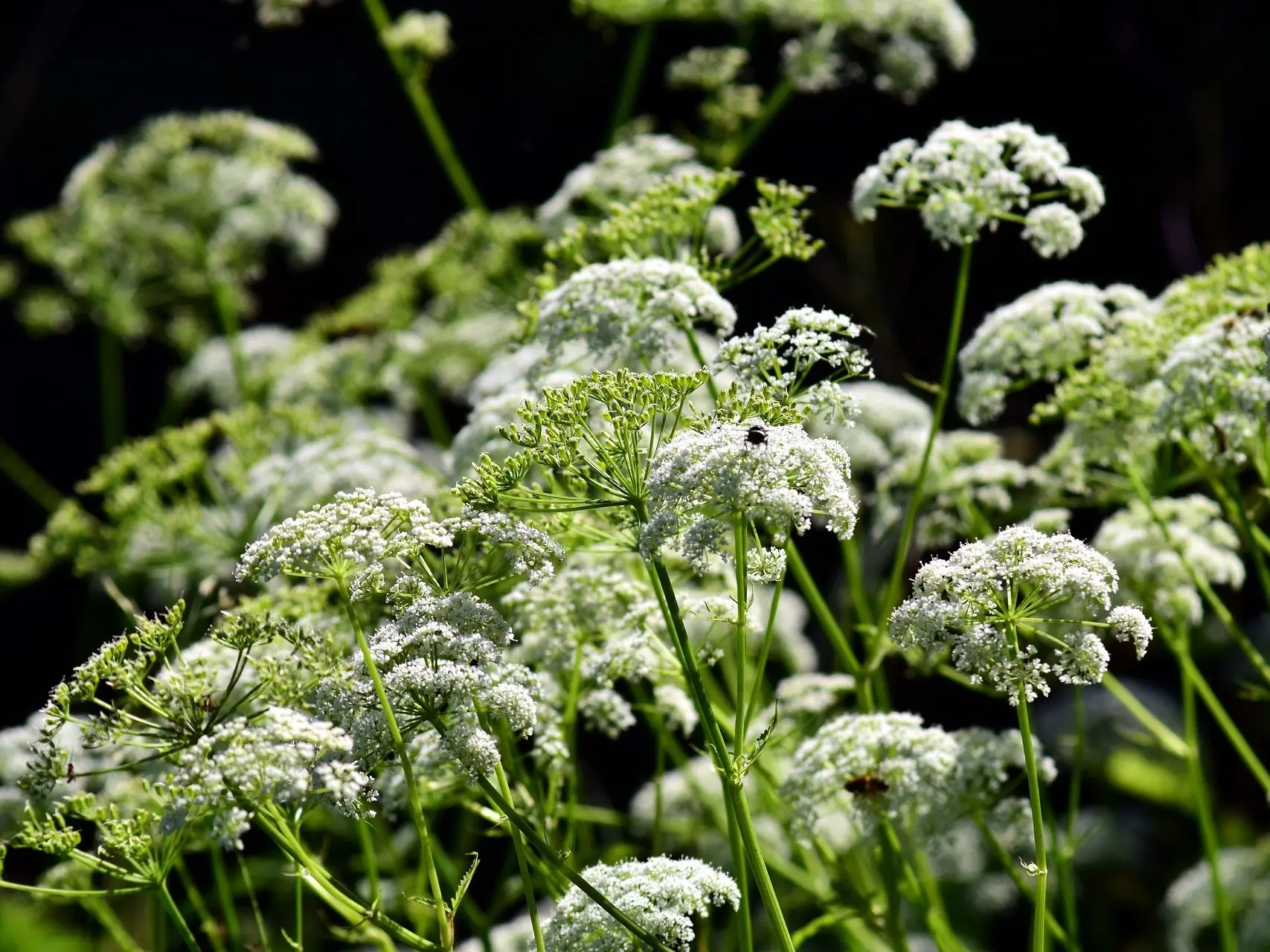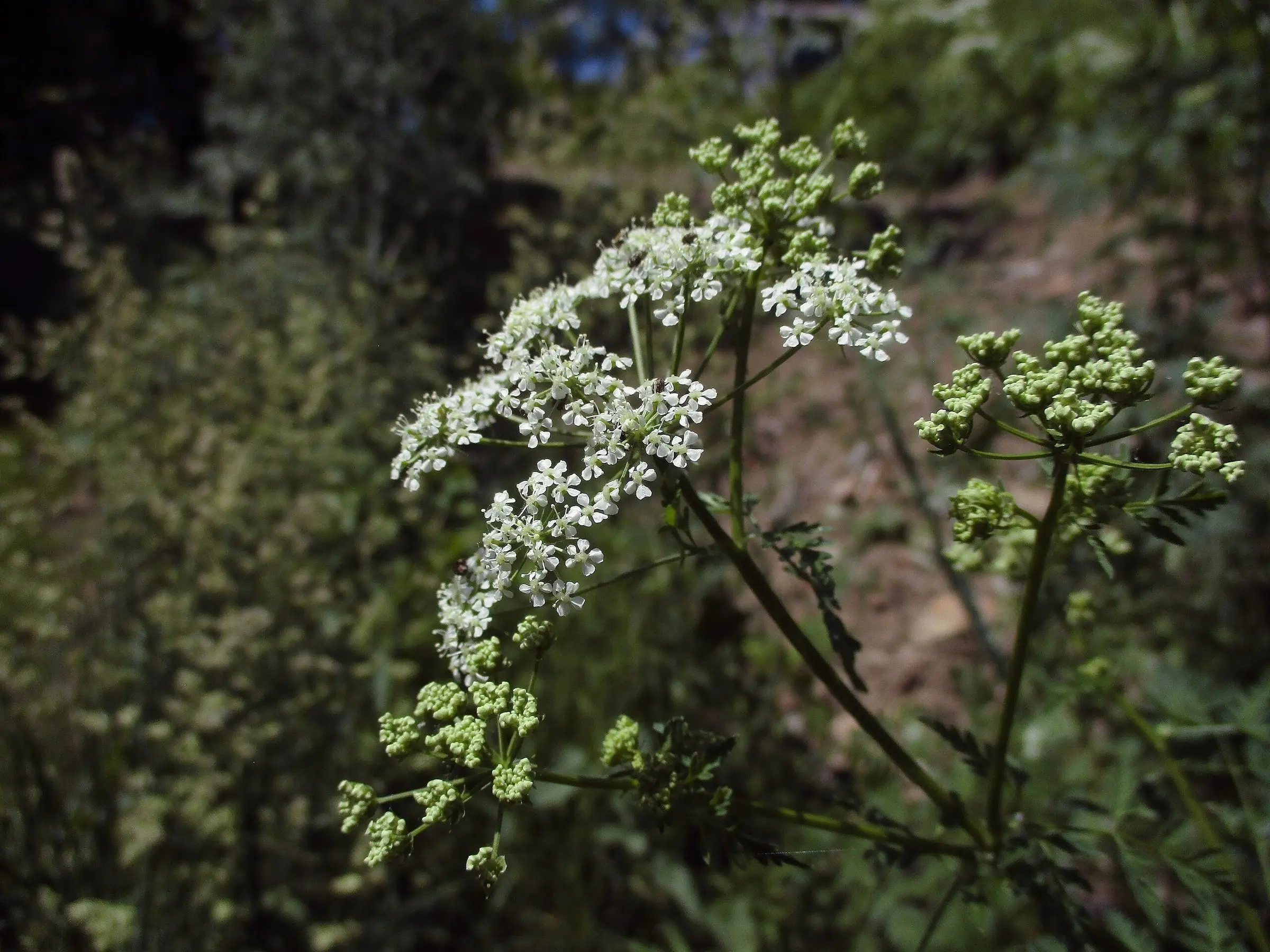
The H’s are a huge category in the a-z of plants your horse can’t eat and this one is a biggie. Today’s plant is already notorious for its effects and Hemlock is just as toxic to you and me as it is to our equine pals.
A Little About Hemlock
Conium maculatum is also called Cowbane, Hemlock, Elephant Parsley, Poison Hemlock, Spotted Hemlock and Water Hemlock. This is a biennial that can grow up to ten feet tall. Stems are waxy, often with purple blotches and leaves are fern-like and alternate on the stem. White flowers grow in clumps and fruit is green with rings. This plant is notable because it stinks.
How Dangerous Is It?
This plant is often found in grassy areas near water sources and it is extremely toxic and should be avoided at all times. The plant contains piperidine alkaloids which cause respiratory failure and almost instant death.
All parts of this plant are highly toxic and can be instantly fatal to equines.

What To Look For
You know your animal the best, so you should know when something is amiss. Hemlock toxicity symptoms occur within minutes of ingestion and include foaming at the mouth, dilated pupils, rapid pulse, convulsions, clamping of the jaw, tremors, loss of coordination, drooling, frequent bowels or urination, heavy breathing, weakness, paralysis – death can occur within 15 minutes of ingestion.
Learn More
Be sure to check out the Hemlock page to learn more about the plant and while you are at it why not check out more toxic plants?
*It should be noted that I’m not a veterinarian. This information is written specifically for horses and should be used for reference purposes only. If you think your horse has eaten something toxic call your vet right away.
I hadn’t realised this was poisonous to humans as well! I’ve read a little about hemlock but feel a bit more informed now, thank you!